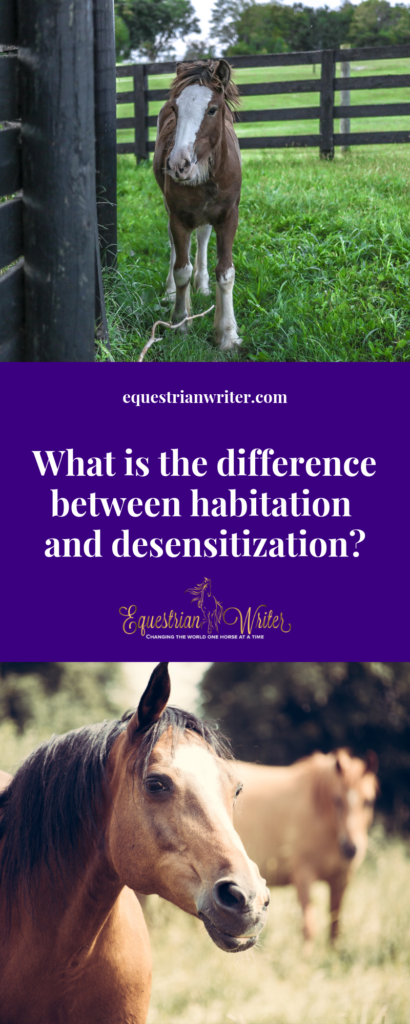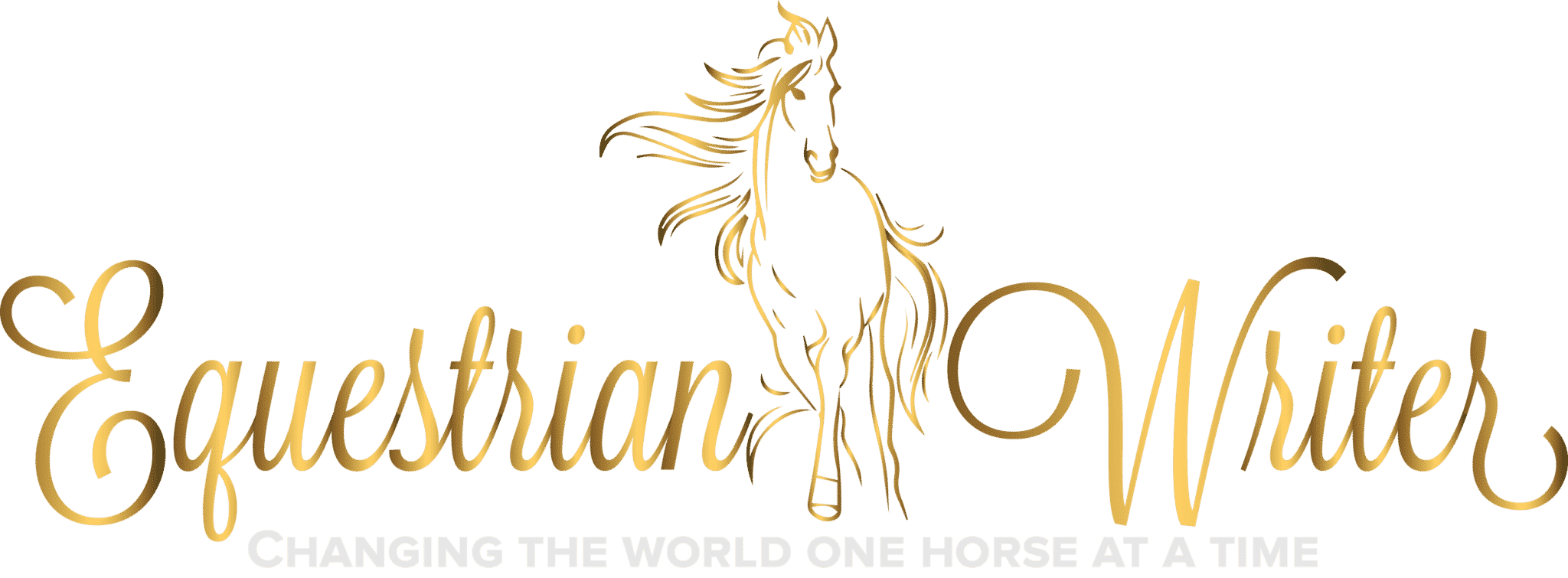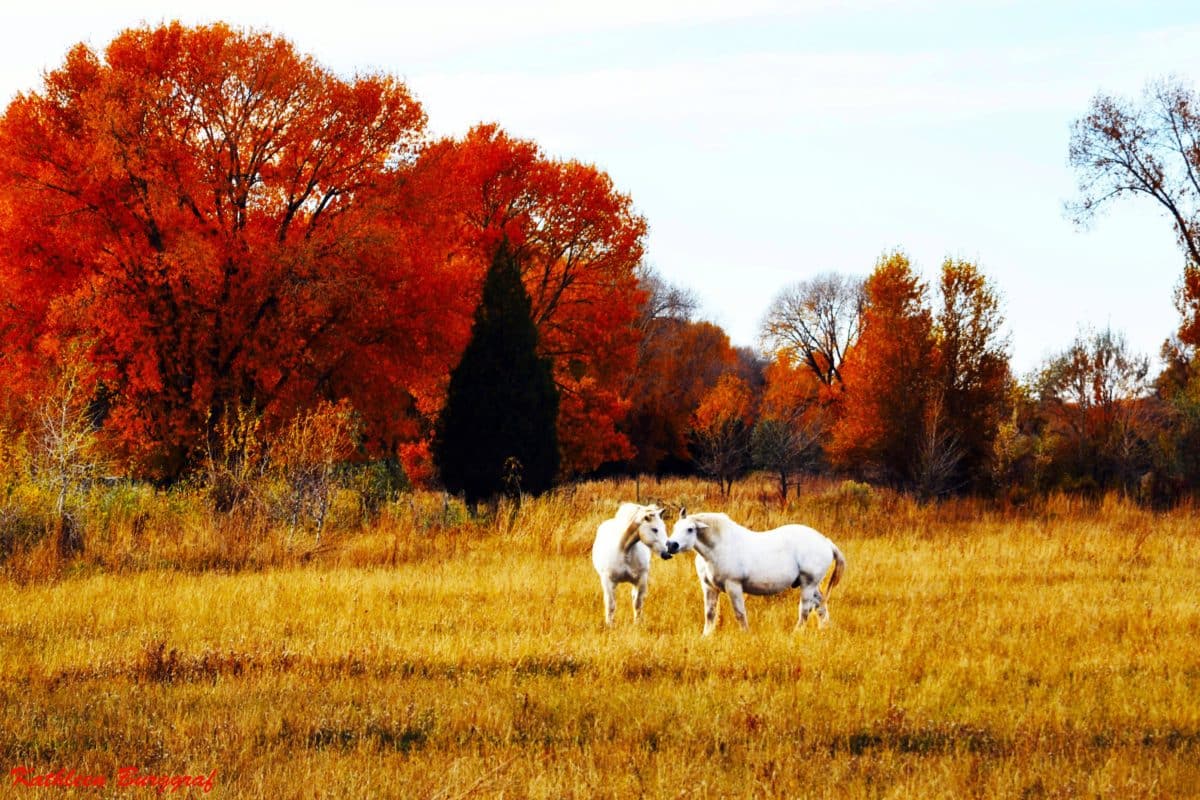

You probably hear a lot about desensitization in horse training. It is a common approach used to acclimate horses to strange objects and environments. The most common application of this method is to use approach and retreat to acclimate a horse to an unfamiliar object that frightens him. This is one of the basic building blocks of many natural horsemanship training programs that are have become so wide spread. However, there is a fundamental flaw in the logic of this approach. The horse quickly learns that every time he spooks at something you’re going to spend twenty minutes “desensitizing” him to it so he can over come his fear.
There are a few — very few — horses who won’t take advantage of this. But a majority of horses will turn it into a game. They will learn to start looking for things to spook at just so they can yank your chain and get out of whatever other work you were trying to do. That is not to say though, that desensitization does not have its place.
When should I use desensitization?
There are some cases where desensitization to specific objects is necessary. Objects that every horse needs desensitized to include:
- saddle
- bridle
- bit
- reins
- brushes
- farrier tools
- vet tools
- truck and trailer
- blankets
- any training equipment that is vital you and your horse’s safety
So, what about preparing your horse to travel to a show or similar venue for the first time? You can’t desensitize him to everything you will encounter. This is where habitation comes in.
Habitation
The theory behind this comes from the classical dressage trainers I have worked with, however I have taken the name from a similar theory in dog training.
The brain uses memories from repeated exposure to create templates of those experiences. These templates are then used to filter new experiences and categorize them as “threatening” or “nonthreatening.” Anything that is categorized as “nonthreatening” are quickly dismissed so that the brain can focus on responding to anything that is categorized as “threatening.”
Horses are prey animals. Despite being domesticated for generations, they still maintain a healthy fight or flight instinct and they certainly seem to favor flight. Anything new they encounter is filtered and categorized within seconds. They rarely take time to think it through. So, it is vital to ensure that they are prepared — through repeated, positive exposure — to categorize most distractions in new places as nonthreatening. Obviously, it is impossible to go around desensitizing a horse to every single distraction he will ever encounter in his lifetime. But that is where those templates come in. Through repeated, positive exposure, you can give him a frame of reference through which to judge new things he may encounter.
Where do I start with habitation?
Start with the very basics. A big thing all horses need to be used to is large equipment. You don’t need to introduce your horse to every piece of large equipment he will ever encounter, but introducing him to a few different pieces of large equipment will allow him to create a more generalized template through which to judge large equipment in the future.
For example, a horse that has only ever seen small tractors will only see small tractors as “nonthreatening.” However, a horse that has been exposed to small tractors, large tractors, arena rakes, and tractor-trailers may then generalize construction equipment and other types of farm equipment as “nonthreatening” with very little thought. Of course, there is no guarantee of this working, but it will greatly increase the chances. The more positive exposure he gets to these types of objects, the stronger his template becomes and the more likely he is to generalize large vehicles and equipment as “nonthreatening.”
In this way, we teach the horse to think in more generalized terms rather than associating each item individually. The horse learns to trust the rider’s judgment on what is “nonthreatening” or “threatening.” The more generalizations like this a horse learns to make, the more he learns to trust his rider’s judgement.
The Downside
Like everything, however, there is a downside. Once a horse learns to generalize positive experiences, they can also begin generalizing negative experiences. So, if the horse in the previous example has a negative experience with a tractor, he may generalize that experience to all large equipment and alter his template so that all large equipment becomes “threatening.” It is then up to the rider to ensure that he has enough positive experiences to rewrite that template so that he goes back to viewing large equipment as “nonthreatening.”
The Key to Success
The biggest key to success is not dwelling on each potentially scary object you encounter. Keep the horse’s feet moving and give him something else to think about. Introduce him to new environments and potential triggers gradually so you are not overwhelming him and accidentally creating negative associations. Rather than stopping to check out each potentially threatening object, just keep riding and ignore it. Horses naturally look at threats. If you look at it, then that could be cause for concern for your horse. Your anticipation of the problem can actually create the problem. It is important to remember that horses are often a reflection of their rider. If you are tense and worried, they will be tense and worried.
Cover Photo by gtwoart









